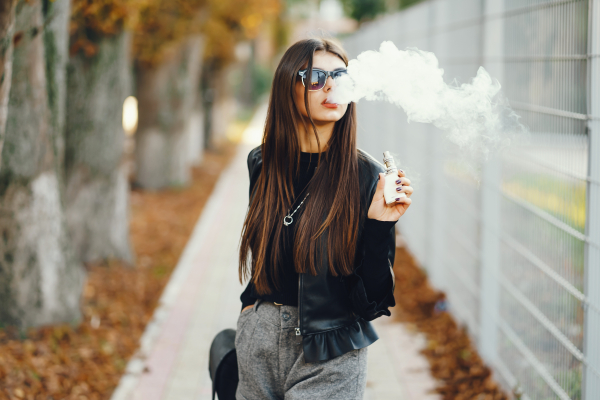Impact of Smoking on Skin and What Happens When You Quit
 Every May 31st, the world observes World No Tobacco Day, drawing attention to the harmful effects of this addictive habit and encouraging healthier lifestyles. Smoking not only damages internal organs but also significantly affects the skin, our body's largest organ and first line of defense against external influences. Fortunately, within weeks after your last cigarette, you can start noticing positive changes.
Every May 31st, the world observes World No Tobacco Day, drawing attention to the harmful effects of this addictive habit and encouraging healthier lifestyles. Smoking not only damages internal organs but also significantly affects the skin, our body's largest organ and first line of defense against external influences. Fortunately, within weeks after your last cigarette, you can start noticing positive changes.How Smoking Affects the Skin
Smoking exerts a detrimental impact on skin health, causing a myriad of issues. This habit induces notable changes in skin structure and appearance, leading to premature aging and overall deterioration.
• Nicotine stimulates sebum production by activating skin receptors, resulting in excessive cell buildup in sebaceous glands, leading to inflammation, enlarged pores, and acne formation.
• Nicotine constricts microcapillaries in the skin within 45 minutes after each cigarette, depriving the skin of sufficient oxygen.
• Nicotine suppresses immunity, slows wound healing, accelerates skin aging by activating enzymes that degrade collagen.
Visual Signs in Smokers
Yellowing of fingers and nails, tooth discoloration, dull complexion, and prominent blood vessels on the face are just a few consequences of smoking. Cumulatively, these changes make a smoker's skin appear older, less healthy, and less attractive.
• Wrinkles and sagging: Damage to collagen and elastin fibers reduces skin elasticity, contributing to wrinkle formation and sagging. Additionally, smoking dehydrates the skin, further accelerating premature aging.
• Skin discoloration: Skin may develop a grayish or yellowish hue, lose its natural radiance, and appear dull due to reduced blood circulation and toxin exposure.
Mechanisms of Skin Aging in Smokers
Several mechanisms contribute to skin aging in smokers:
Heat from cigarettes burns the skin;
Changes collagen and elastin fibers (medical elastosis);
Narrowing blood vessels reduces skin blood supply;
Reducing the level of vitamin A and skin moisture.
The loss of structural proteins that give skin strength and elasticity leads to rapid aging. Research published in 2020 also showed that the skin of smokers is harder than those who do not smoke. Smoking promotes the formation of melanocytes in the skin, which can lead to the appearance of pigmented and dark spots.
Smoking and Skin Diseases
The constant exposure to carcinogens from cigarette smoke increases the risk of developing diseases and exacerbates existing illnesses in humans.
• Smoking increases the risk of skin cancer (squamous cell carcinoma).
• Smokers suffer from severe psoriasis, eczema, rosacea, bacterial, viral skin diseases twice as often.
• As mentioned earlier, nicotine can increase sebum production and cell keratinization in sebaceous glands, leading to inflammation and acne formation.
• Smoking slows wound healing by reducing blood flow and oxygen supply to damaged tissues. This can lead to prolonged healing of ulcers and other skin damage.
• Smoking can cause hair loss due to several factors: damage to the DNA of hair follicle cells by free radicals, nicotine, and narrowing of blood vessels.
How Quitting Smoking Affects the Skin
In general, noticeable improvements can appear within a few weeks after quitting smoking, and significant changes in skin condition may be visible within a few months. To achieve maximum effect, it is essential to maintain a healthy lifestyle, balanced nutrition, and regular skin care.
• Pigmented spots and redness may decrease within 1 month after quitting smoking. Similarly, a 2013 study showed that skin color changes caused by smoking began to return to normal within 4-12 weeks after quitting smoking.
• Smoking cessation can also help reduce signs of skin aging. A 2010 study showed that quitting smoking led to a 13-year reduction in participants' biological age.
• After quitting smoking, the body restores collagen production. This can lead to visible changes, including brighter and smoother skin due to improved blood circulation and reduced carbon monoxide levels in the blood.
Improvements in skin condition after quitting smoking depend on individual body characteristics and the duration of smoking. In some cases, additional dermatological assistance and the use of special skincare products may be needed to achieve maximum effect.
Helping the Skin and Body Recover
For those who have recently quit smoking, it is important to choose skincare products that will help restore its health and beauty. The main assets that should be in cosmetic products are antioxidants. Vitamins C and E, F, K, green tea, ginkgo biloba or goji berries, ubiquinone (coenzyme Q), glutathione, resveratrol. They protect skin cells from damage by free radicals, thereby preventing oxidative processes in them.
Use moisturizers to maintain skin hydration and products with a high concentration of moisturizing components for intensive care. Be sure to use sun protection to protect the skin from ultraviolet radiation, which can worsen the condition of the skin. Use creams with SPF of at least 30.
Certain foods and supplements can help the skin recover after quitting smoking. Drink enough water to maintain skin hydration. Balanced nutrition with lots of fruits, vegetables, proteins, and healthy fats will contribute to overall health. Also, BAA can be added to the diet, but it is necessary to consult a doctor beforehand.









